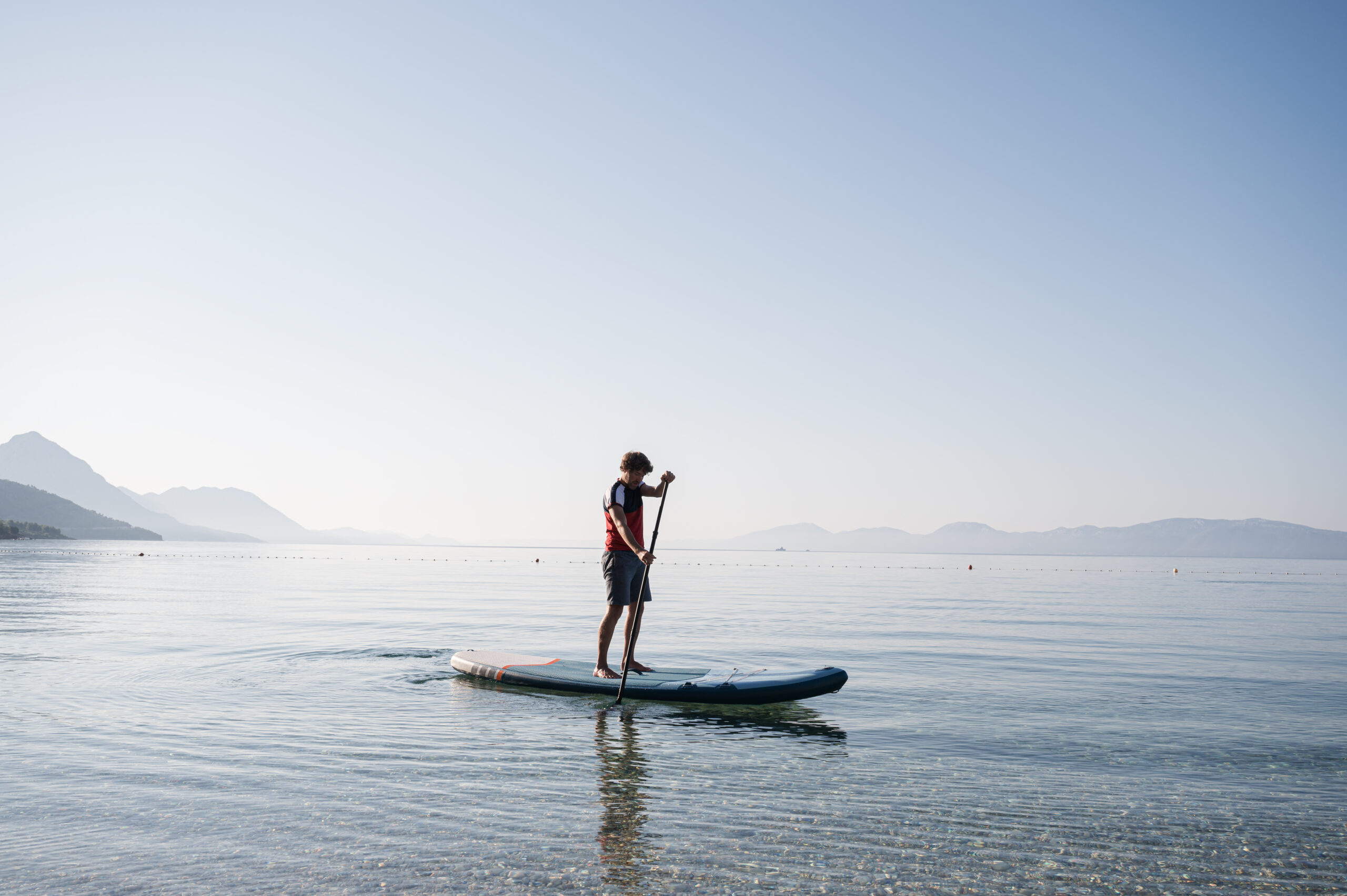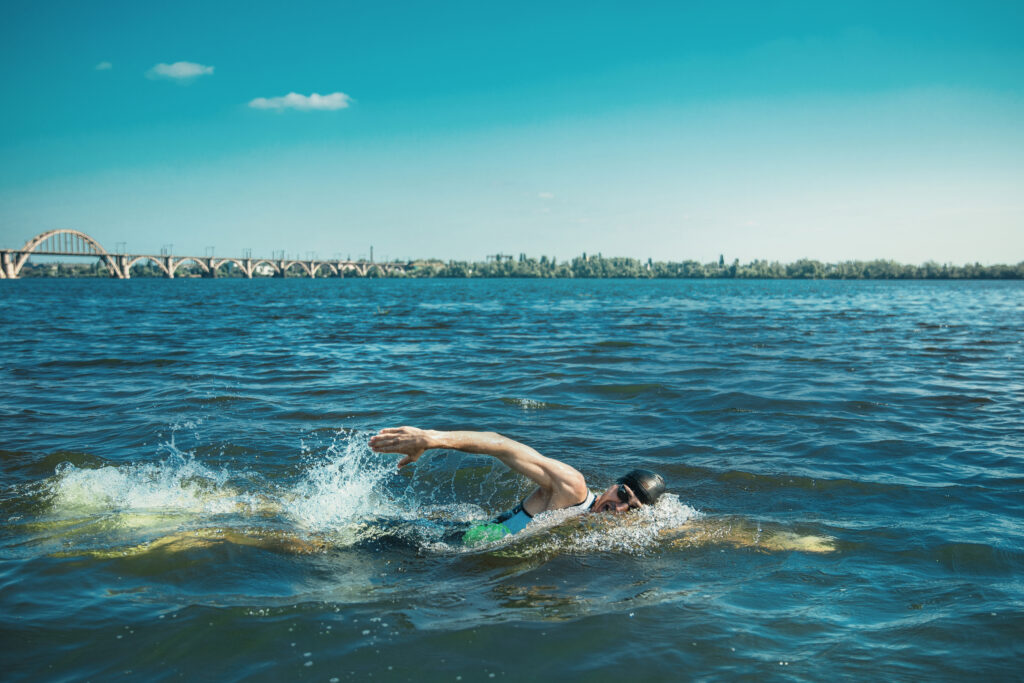
Summer is the perfect time to get outdoors and enjoy time at the lake or by the sea. And the warmer weather provides the ideal opportunity to try out one of the many open water activities available without worrying about freezing water temperatures!
Swimming and paddle boarding are two of the most popular open water sports, but open water can be hazardous, particularly for beginners. Aside from physical obstacles like boats and other watercraft to watch out for, you also need to be prepared to deal with waves, tidal patterns, and currents, which could quickly land you in trouble.
But these dangers shouldn’t put you off trying new activities. If you’re aware of the risks and know how to react accordingly, you’ll be able to enjoy the challenges of open water sports safely.
This article will help you protect yourself and keep you safe in open water. But before we dive in, here are three essential rules to follow when taking up any potentially dangerous new activity.
- Know your limits and act within them
- Always be aware of the conditions
- Never go out without the right equipment
How to Stay Safe Swimming in Open Water
Research the area before you go out.
When open water swimming for the first time, you need to remember that this is not like swimming in a pool – the water can be unpredictable. You need to pay attention to the conditions and check for strong currents and other hazards.
Before you go, check the weather, water temperature, wind, and when swimming in oceans and tidal rivers, the currents and tidal flow conditions. If you’re not a strong swimmer, don’t risk strong currents or rough winds; remember know your limits.
Swim in dedicated locations and always be aware of the safety information.
There are plenty of excellent venues dedicated to open water activities for a reason. Do not just swim in any old open water spot as the conditions are unknown and less predictable, which makes it much more dangerous.
If you swim in recognized spots, you’ll also have better access to safety information which you should always obey.
Make yourself visible in the water with the right equipment.
When swimming in open water, you should never forget to wear a bright swim hat and a tow float, so you’re easy to spot in the water. This will keep you safe from boats and other watercraft and make you easy to rescue should you need to signal for help.
Depending on the water temperature, consider wearing a wetsuit and always put on waterproof sunscreen to protect yourself from UV rays. (Make sure to use mineral sunscreen to avoid polluting the water with dangerous chemicals that can harm marine life.)
Always swim with a friend.
Swimming with others can be a fun social experience, but it also helps keep you safe. Ideally, you want a relatively experienced swimmer in your group, but this isn’t a complete necessity. It’s also a good idea to let someone “on land” know where you’ll be swimming and what time you’ll be back for added safety.
Bring plenty of food and water.
Open water swimming can be quite strenuous, especially if you aren’t used to it, so bring some high-energy snacks to enjoy afterward to keep yourself refreshed. Some good options include:
- Fruit: bananas, grapes, apples
- Crackers or rice cakes
- Dried fruit
- Hummus and pita
- Trail Mix
Remember to keep yourself hydrated, too; you’ll be surprised how thirsty you get swimming!
What to do in an emergency
If you start to get into trouble or feel overwhelmed while swimming in open water, the most important thing is not to panic. If you start to struggle, panic swimming will only make your situation worse and tire you out.
Stay calm, float on your back, and call for help.
How to Stay Safe Paddle Boarding in Open Water
Paddleboarding is a fun leisure activity that can be relaxing if done safely. However, for beginners, the unfamiliar experience can lead to unsafe behavior and unforeseen hazards.
Keep the following paddleboarding safety tips in mind, and you’ll be able to enjoy your new hobby anytime the weather gets nice.
Have your experience level mark when you board.
Essentially, it comes back to the first tip we covered – know your limits!
Paddleboarding can be a notoriously difficult sport to pick up as it requires excellent balance. To this end, make choices that ensure your experience is as easy and safe as possible. This includes getting the right size, shape, and composition board for your skill level and body size.
Be aware of the weather.
Optimum weather conditions for paddleboarding beginners are sunny with little wind, so be cautious of windy or very rainy days (not that they’re much fun to board on anyway!).
If the weather turns while you’re out and the wind picks up, try and stay with the wind facing your back where possible to avoid battling against it. If it becomes too much, lie on your stomach and paddle back to shore.
Choose the right time of day to go.
The water is usually at its most calm in the morning and at night, but the latter obviously brings its own challenges in the form of reduced visibility. The morning is probably best in most cases and has the advantage of being quieter than other times of day, which is perfect for new boarders.
Take paddleboard lessons.
When learning a new skill, it’s always best to learn from an experienced hand, and a paddleboard lesson has plenty of other benefits too. You don’t have to worry about picking a spot or planning a session, you can meet new people if you join a group, and you can gain your confidence before attempting a solo outing.
Even if you have some knowledge, a lesson might just help you advance to paddleboarding in the ocean or for more advanced long-distance sessions.
Stand up tall and engage your core.
Only using your arms when paddling will tire you out quickly, so you need to be able to manage your core and use your full height. Stand up straight and put your paddle fully in the water, and you’ll find the experience much easier and your stamina much greater!
Consider carrying an emergency communication device.
Best case scenario, you’ll never need it, but when paddling on rivers and lakes, the phone signal might be unreliable, so in an emergency, a device that can alert someone regardless of signal could be crucial.
So there you have it, water safety tips to keep in mind while paddle boarding or swimming in open water. Please be aware that this article isn’t here to put you off open water activities or brand them as a dangerous hazard but to highlight some things you should be aware of to maximize your experience. Stay safe out there and enjoy yourself no matter what you do!
Author: Glyde Paddle Boards




